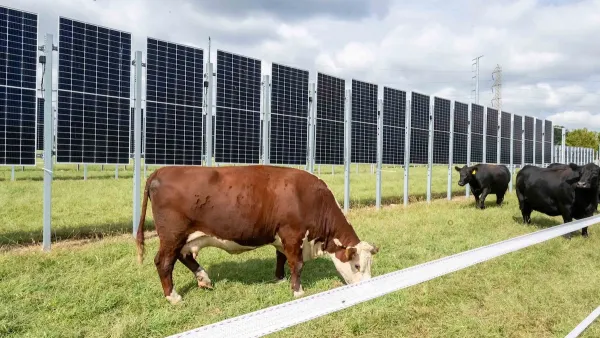Norimitsu Onishi reports on the major rift caused by a proposed plan for twin 35-mile tunnels to take water from the Sacramento River to large corporate farms and densely populated regions in Central and Southern California.
In July, state and federal officials announced plans to build two 35-mile pipelines that would run underneath the Sacramento River delta and deliver water to aqueducts that feed the various farms and regions to the south, at a cost of $14 billion. The project has caused consternation among elected officials and farmers in the delta due to questions about the impact on the region's environment and economy.
Gov. Jerry Brown and project supporters claim that the aqueducts will improve the "supply of water to California's most economically vital areas," but farmers in the delta are arguing that the increase of salt water that would accrue in the area after the fresh water is removed would threaten its fish population and the agricultural output of the neighboring farmlands.
Delta farmers fear that the project may rob them of their way of life. "'That's our rub,' said Chuck Baker, a pear farmer who like others here accused government officials and people in the south of 'stealing our water.' 'They want to take these islands and the way we've existed for 150 years.'"
According to Onishi, "Much of the delta is classified as prime farmland and produced about $800 million in agricultural products in 2009, but the output is dwarfed by counties to the south, whose agricultural production totaled about $25 billion."
FULL STORY: Redirecting Fresh Water Raises Fears for Farmers

National Parks Layoffs Will Cause Communities to Lose Billions
Thousands of essential park workers were laid off this week, just before the busy spring break season.

Retro-silient?: America’s First “Eco-burb,” The Woodlands Turns 50
A master-planned community north of Houston offers lessons on green infrastructure and resilient design, but falls short of its founder’s lofty affordability and walkability goals.

Delivering for America Plan Will Downgrade Mail Service in at Least 49.5 Percent of Zip Codes
Republican and Democrat lawmakers criticize the plan for its disproportionate negative impact on rural communities.

Test News Post 1
This is a summary

Test News Headline 46
Test for the image on the front page.

Balancing Bombs and Butterflies: How the National Guard Protects a Rare Species
The National Guard at Fort Indiantown Gap uses GIS technology and land management strategies to balance military training with conservation efforts, ensuring the survival of the rare eastern regal fritillary butterfly.
Urban Design for Planners 1: Software Tools
This six-course series explores essential urban design concepts using open source software and equips planners with the tools they need to participate fully in the urban design process.
Planning for Universal Design
Learn the tools for implementing Universal Design in planning regulations.
EMC Planning Group, Inc.
Planetizen
Planetizen
Mpact (formerly Rail~Volution)
Great Falls Development Authority, Inc.
HUDs Office of Policy Development and Research
NYU Wagner Graduate School of Public Service



























